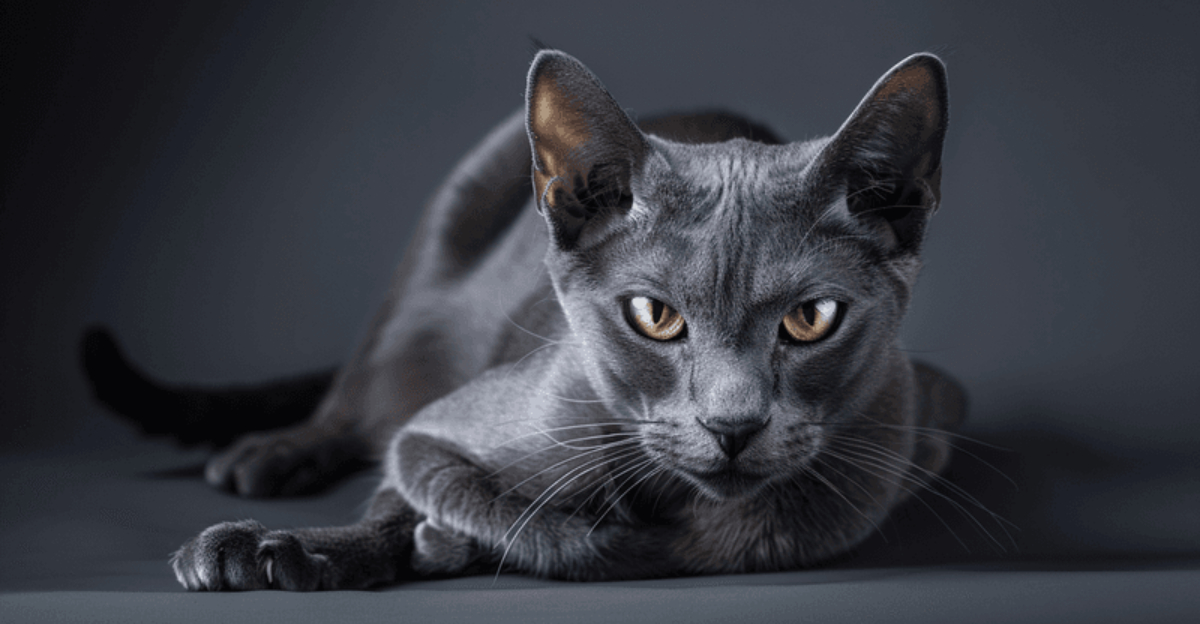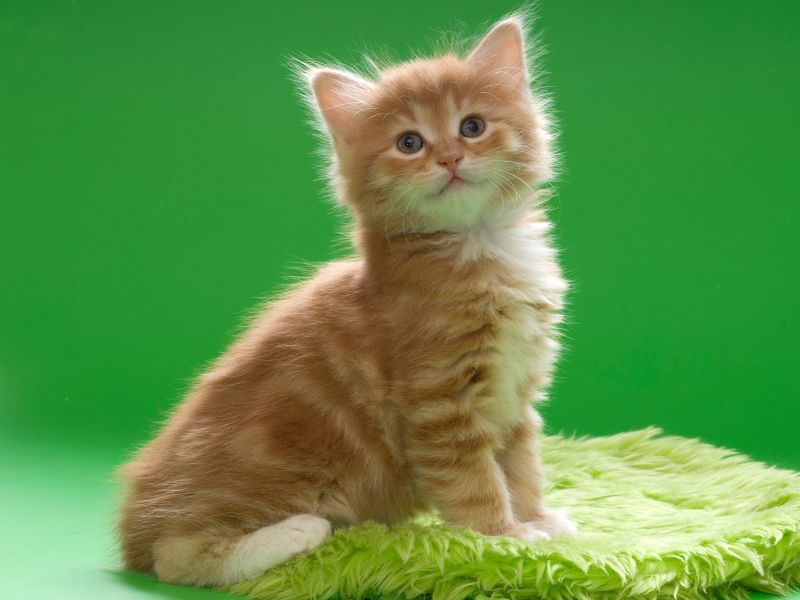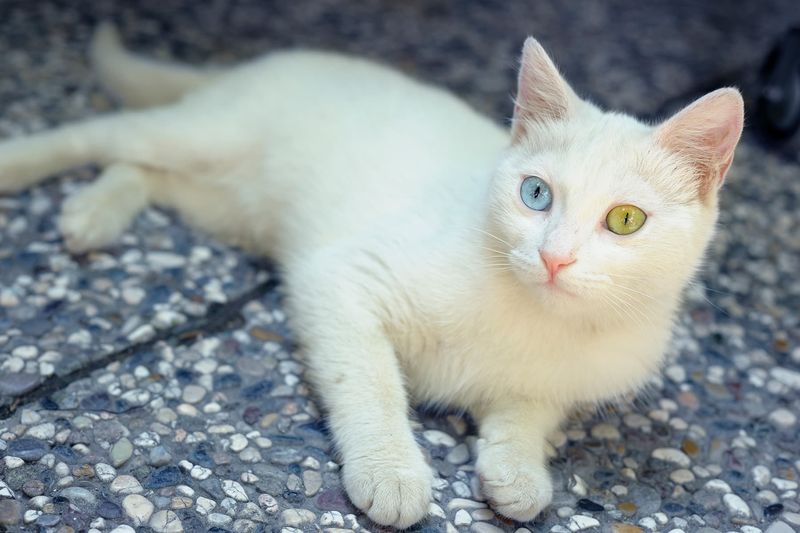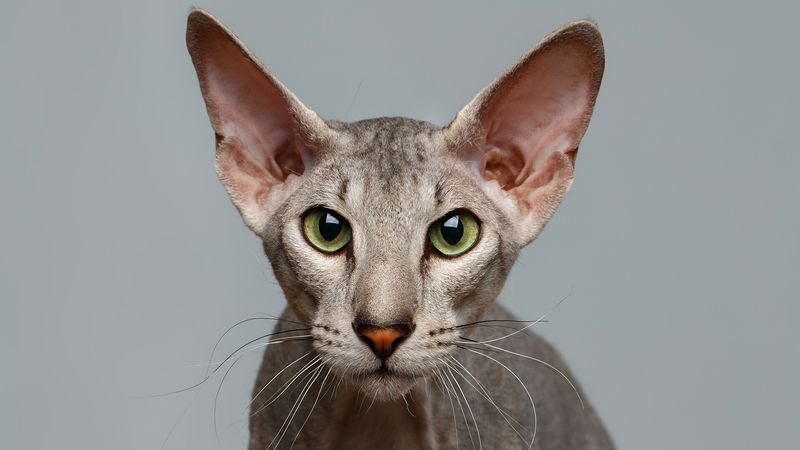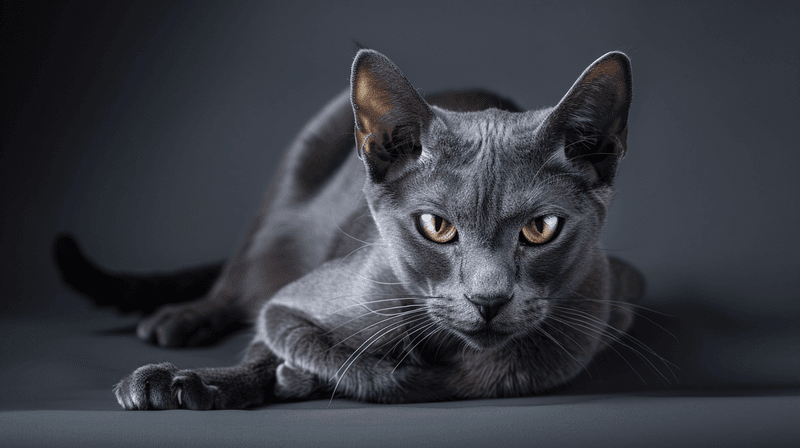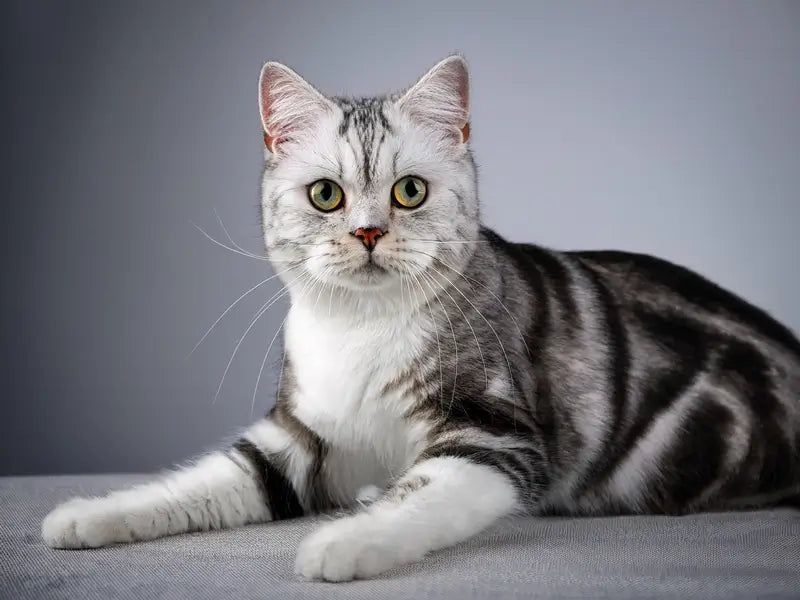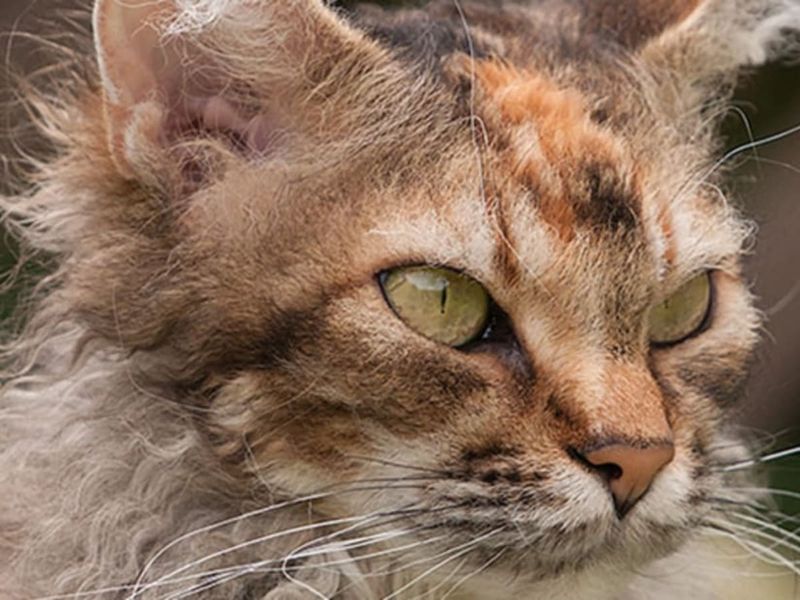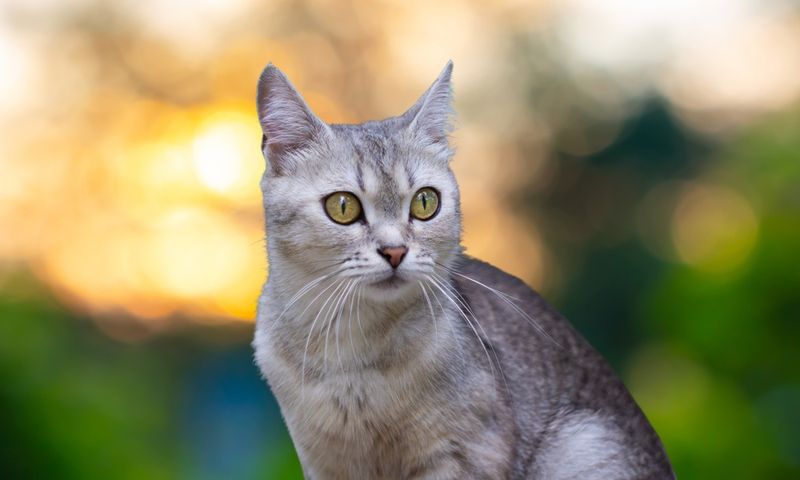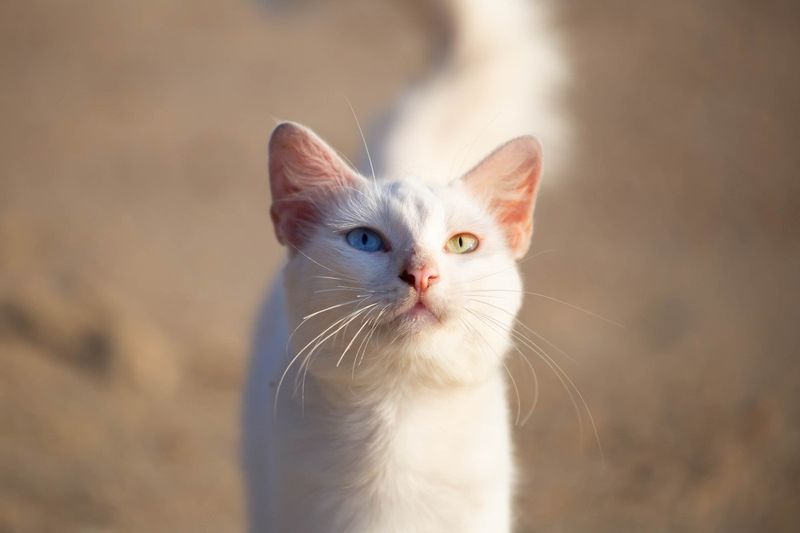📖 Table of Content:
Cat lovers around the world know the joy of having a feline friend, but some breeds are so rare you might never see one in person. These uncommon cats often have fascinating histories and unique characteristics that make them highly sought after by enthusiasts.
From unusual coat patterns to distinctive personalities, these 11 rare cat breeds represent some of the most elusive felines on the planet.
1. Sokoke
Native to Kenya’s Arabuko-Sokoke Forest, these wild-looking cats almost went extinct before being discovered by Western breeders in the 1970s. Their distinctive marble-patterned coats resemble tree bark, providing perfect camouflage in their natural forest habitat. Sokokes are incredibly athletic and maintain a close bond with their human companions. Unlike many cats, they enjoy water and may join you during shower time or while washing dishes. With fewer than 100 registered worldwide, finding a Sokoke requires patience and dedication. Their rarity comes from strict breeding programs designed to maintain their genetic diversity and health.
2. Kurilian Bobtail
Originating from Russia’s remote Kuril Islands, these natural bobtails sport a distinctive pom-pom tail resulting from a genetic mutation. Each tail is unique – like a fingerprint – with various combinations of kinks, curves, and spirals measuring between 2-8 inches long. Fishermen have long valued these cats for their exceptional hunting abilities. They’re known to wade into shallow water to catch fish with their paws! Despite being common in their native region, Kurilians remain extremely rare outside Russia and parts of Europe. Their robust health and friendly personalities make them worth the search for dedicated cat enthusiasts.
3. Turkish Van
Often called “swimming cats,” Turkish Vans have a natural affinity for water, unlike most felines. Their water-resistant coats help them stay dry while swimming – a trait that developed naturally in Turkey’s Lake Van region where they originated thousands of years ago. The classic Van pattern features a white body with colored markings only on the head and tail. Their silky coats lack an undercoat, making grooming surprisingly easy despite their luxurious appearance. Turkish Vans mature slowly, reaching full development at 3-5 years. Finding one requires contacting specialty breeders, as fewer than 100 kittens are registered annually in North America.
4. Norwegian Forest Cat
Featured in Norse mythology as the mountain-dwelling cats that pulled the goddess Freya’s chariot, Norwegian Forest Cats nearly disappeared during World War II. Conservation efforts saved these magnificent felines from extinction, though they remain uncommon outside Scandinavia. Their double-layered coats include a woolly undercoat for insulation and a water-repellent top layer that helps them survive harsh Nordic winters. Massive tufted paws act like natural snowshoes in deep snow. Males can weigh up to 20 pounds when fully grown. Despite their wild appearance, they’re surprisingly gentle and patient with children, making them excellent family pets for those lucky enough to find one.
5. Peterbald
Developed in Russia during the 1990s, Peterbalds resulted from crossing Oriental Shorthairs with a single Donskoy cat. Their most striking feature is their variable hairlessness – they can range from completely bald to having a fine peach-fuzz coating or even a short, wavy coat. The skin of hairless Peterbalds feels warm and sticky to the touch, similar to suede. They require regular bathing to remove excess oils that would normally be absorbed by fur. Extremely social and intelligent, these cats form intense bonds with their owners. Their rarity stems from small breeding populations and the genetic complexity of maintaining healthy hairless traits.
6. Korat
Considered living good luck charms in their native Thailand, Korats were traditionally given in pairs to newlyweds to ensure a fortunate marriage. Their silver-blue coats shine with each movement, creating a halo effect called “sea foam” that makes them appear to shimmer in certain lighting. Heart-shaped faces distinguish Korats from other blue cats. Their large green eyes develop slowly, starting as amber in kittens and gradually changing color over 2-4 years. Thai tradition holds that Korats should never be sold – only given as gifts – which contributed to their rarity outside Asia. Even today, finding a purebred Korat requires connecting with specialized breeders with waiting lists often extending several years.
7. American Wirehair
Born from a spontaneous mutation in a barn cat litter in upstate New York in 1966, American Wirehairs feature uniquely crimped, springy fur that feels like steel wool. Each hair – including whiskers and ear fur – is hooked or crimped, creating a texture unlike any other cat breed. Their coats require minimal grooming despite the unusual texture. Excessive brushing can actually damage the distinctive wiry structure of their fur. With fewer than 100 registered annually, American Wirehairs remain one of the rarest breeds recognized by cat associations. The mutation occurs naturally but rarely, making breeding programs small and specialized, with most concentrated in the northeastern United States.
8. LaPerm
LaPerms began with a bald kitten born on an Oregon farm in 1982 who later developed a curly coat. The unusual curls result from a dominant gene mutation that creates soft, bouncy ringlets resembling a permanent wave hairstyle – hence the name. No two LaPerms have identical curl patterns. Some have tight corkscrew curls while others display loose waves, with the curliest coats found around the neck, base of ears, and tail. Kittens may be born with straight hair that falls out completely before the curly adult coat grows in. Finding a LaPerm requires patience – with fewer than 300 registered worldwide, waitlists for these affectionate curly cats can stretch to several years.
9. Burmilla
Created through an accidental breeding between a Chinchilla Persian and a Burmese in the UK in 1981, Burmillas display a silvery coat with a distinctive “tipped” pattern. Their fur appears to shimmer thanks to the transparent tipped hairs that reveal the silver undercoat. Behind their striking appearance lies a playful personality that retains kitten-like behaviors well into adulthood. Many Burmilla owners report their cats playing fetch and solving puzzle toys with remarkable intelligence. Most Burmillas are still found in the United Kingdom where the breed originated. With fewer than 1,000 registered worldwide and limited breeding programs in North America, finding one often requires international shipping arrangements.
10. Chartreux
Legends claim these blue-gray cats lived with Carthusian monks in French monasteries, where they took a vow of silence alongside their human companions. Their naturally smiling expression comes from the unique shape of their muzzle, giving them a perpetually pleased appearance. Chartreux cats possess dense, water-repellent double coats that were once prized for fur. This practice thankfully ended centuries ago, though the plush texture remains a defining characteristic. The breed nearly disappeared during World War II when breeding programs were abandoned. A dedicated effort by European fanciers saved them from extinction, though they remain rare, with fewer than 2,000 registered worldwide, most concentrated in France.
11. Khao Manee
Known as the “White Gem” cat in their native Thailand, Khao Manees were once owned exclusively by Thai royalty. Their pure white coats and jewel-toned eyes – often odd-colored with one blue and one gold – were considered symbols of good fortune and prosperity. Ancient manuscripts dating back to the 14th century mention these cats, making them one of the oldest documented breeds. Despite this long history, they weren’t officially recognized in Western cat associations until 2015. The first Khao Manee didn’t leave Thailand until 1999, explaining their extreme rarity outside Southeast Asia. Fewer than 50 exist in North America, with breeding programs still in early development stages.
